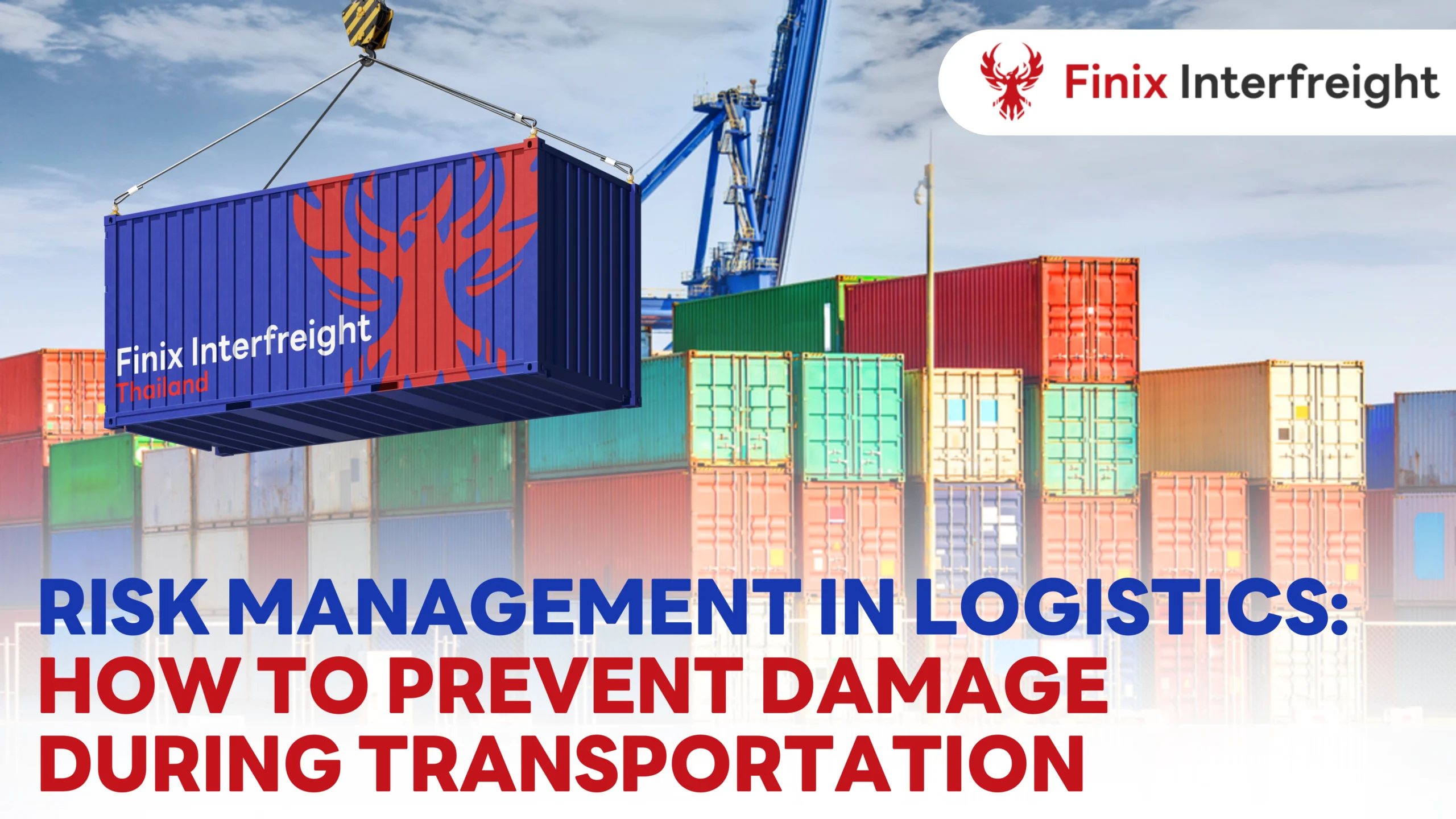In logistics, transporting goods is a process that comes with many risks. Whether it’s damage to goods, delays in shipping, or the loss of products, these risks can significantly affect a business in terms of cost and customer satisfaction. Risk management in logistics is crucial to ensure the creation of an efficient and safe shipping system.
This article will introduce you to methods of risk management in logistics, as well as how to prevent damage during transportation that businesses can adopt to enhance efficiency and reduce risks when shipping goods.
1. Common Risks in the Logistics Process
Shipping goods comes with various types of risks that can affect both short-term and long-term operations. Some common risks include:
- Damage to goods: Products may be damaged during transit, such as being broken, crushed, or deteriorating from improper handling.
- Loss of goods: Goods may be lost or stolen during the shipping process or while being stored in warehouses.
- Shipping delays: Issues such as weather conditions, traffic, or management problems can delay shipments, affecting the timely delivery of goods to customers.
- Documentation errors: Incorrect or incomplete documents, such as shipping invoices or customs declarations, can cause delays and lead to legal issues.
2. How to Manage Risks in Logistics
To prevent and mitigate risks during the shipping process, there are several strategies that businesses can implement:
- Choosing an experienced shipping provider: Selecting a provider with expertise and a good reputation helps reduce the risks involved in transportation. Shipping providers with proper employee training in safety and risk management will ensure better handling of goods.
- Goods insurance: Insuring goods is an effective way to reduce the financial risk in case of damage or loss during transportation.
- Real-time tracking of shipments: Using technology to track goods throughout the transportation process, such as GPS or online platforms, allows businesses and buyers to monitor the status of goods in real-time. This not only ensures security but also increases trust in the service provider.
- Thorough document management: Ensuring that all necessary documentation is correct and complete, such as the Bill of Lading and invoice, helps prevent customs issues and border crossings delays.
- Employee training: Providing regular training for employees on safety and proper handling procedures can reduce the risk of mishandling goods.
- Choosing the right shipping method: Selecting the appropriate shipping method based on the type of goods can help prevent damage. For example, if goods are fragile, air freight, which is faster and safer, may be the best choice.
3. Risk Assessment in the Shipping Process
Risk assessment is an important step that allows businesses to proactively address potential risks in logistics:
- Assessing shipping providers’ risks: Businesses should carefully evaluate shipping providers by checking their history and certifications to ensure their reliability in managing risks.
- Inspecting goods before shipping: Inspecting goods before transportation allows businesses to identify and address potential problems before shipment.
- Using a Transportation Management System (TMS): A TMS helps businesses manage shipping data and track the status of shipments, making it easier to address any risks that may arise.
4. Preventing Damage During Transportation
Preventing damage to goods during transportation can be done in several ways:
- Using proper packaging: Proper packaging that can protect goods during transit, such as shock-resistant packaging or wrapping, ensures that goods remain intact.
- Labeling goods clearly: Proper labeling of goods with specific handling instructions helps ensure the correct treatment of items during transport.
- Handling high-risk items separately: For high-risk items, such as fragile products or those requiring special care, additional management strategies should be employed. This may include using special handlers during transit.
Conclusion:
Risk management in logistics is a crucial aspect that businesses should never overlook, especially when dealing with risks that may affect operations and customer satisfaction. Utilizing technology, selecting reliable shipping providers, and providing employee training all contribute to safer and more efficient transportation.

